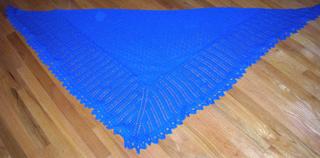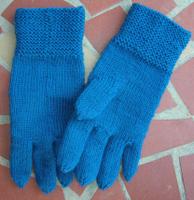
In order to always know where I was in the pattern, I used an excel spread sheet with row numbers and the number of stitches in each row. I had the spread sheet laminated and then marked off each box as I completed a row instead of using a row counter. I used two spread sheets: middle section and edging.
When doing the lace pattern, be aware that Row 1 and Row 2, as written in the directions, are rows 1 and 2 of the chart.
When working the edging, be aware that there are always just two stitches between the center markers. The YO at the corner are on the outside of the markers.
I used markers throughout the knitting of the center and edging. It takes some work to place the markers correctly so that the decreases do not displace the markers. Using markers really helped me to know if my stitch count was correct.
I checked the stitch count often -- sometimes at the end of each row -- to try to catch mistakes early.
Be sure to follow directions and "bind off loosely" at the end so that the shawl will block nicely.
For all posts relating to this shawl, go to
this link.
(Post recovered and added from old SandpiperKnits website, which is now closed (due to Geocities stopping free web pages).











